Business & Management
Local Governments Embrace Innovative Financing Framework for Infrastructure Development
Published
1 year agoon
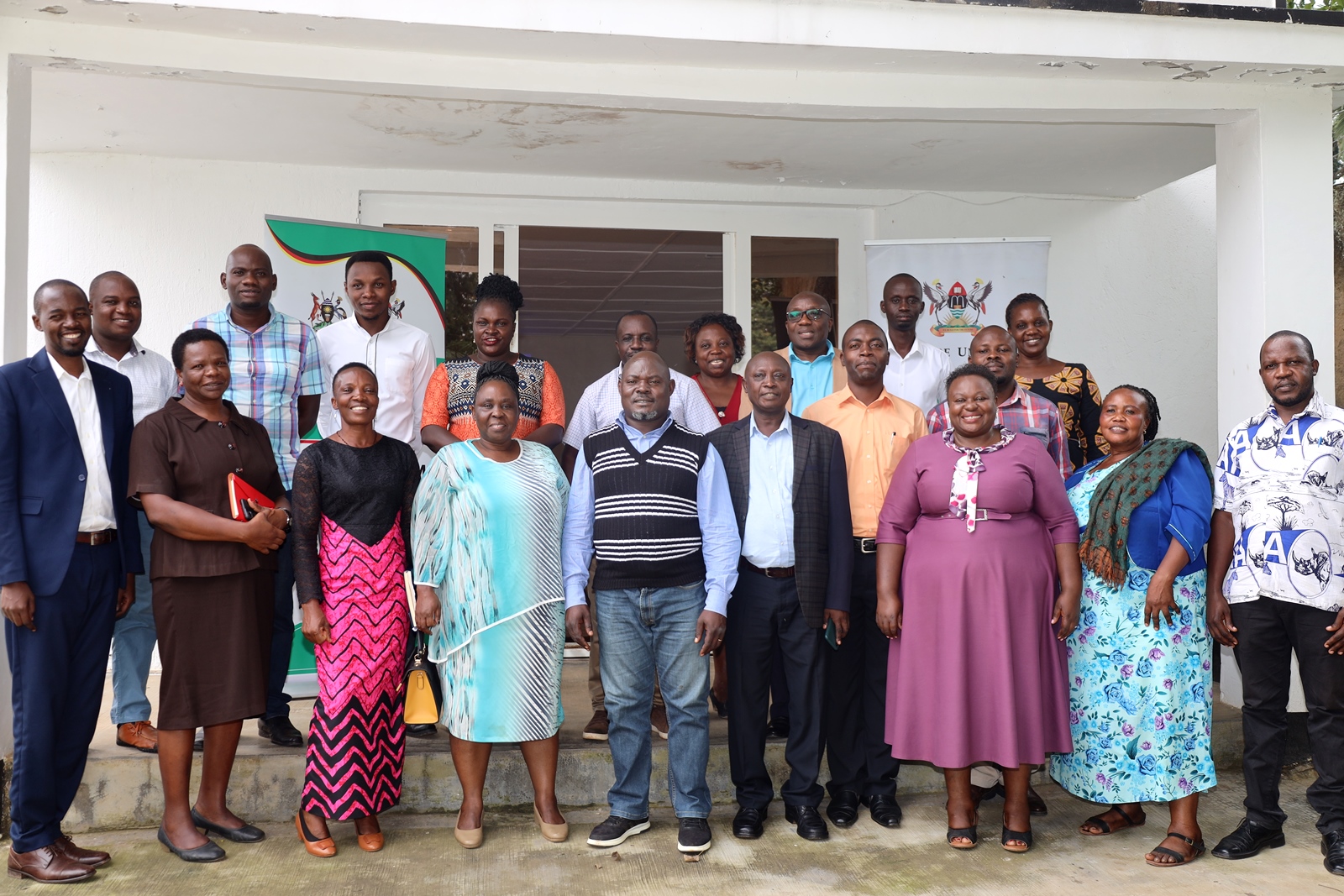
Local governments across the country continue to struggle with funding for infrastructure development. The government of Uganda has been exploring ways to enhance the financial autonomy of local governments, including improving their capacity to borrow responsibly for development projects. This includes capacity-building initiatives and reforms to streamline the borrowing process albeit with little success. This is because of the stringent laws surrounding borrowing as well as the local government’s creditworthiness, which is influenced by factors such as revenue collection efficiency and financial management practices, affects its ability to borrow and the terms of borrowing.
It is against this background that researchers from the School of Business partnered with United nations Capital Development Fund to undertake a study on “Enabling new Cites to Access Private Capital for Local Investments.” The research team, led by Dr. Yusuf Kiwala, who undertook a study of Arua and Mbale city, have proposed a framework, which if adopted could help local government address their development challenges.
In a groundbreaking move, local governments in Uganda are set to revolutionize their approach to funding infrastructure projects with the introduction of a comprehensive financing framework. This new strategy aims to enhance collaboration between public and private sectors, ensuring sustainable development across the country.
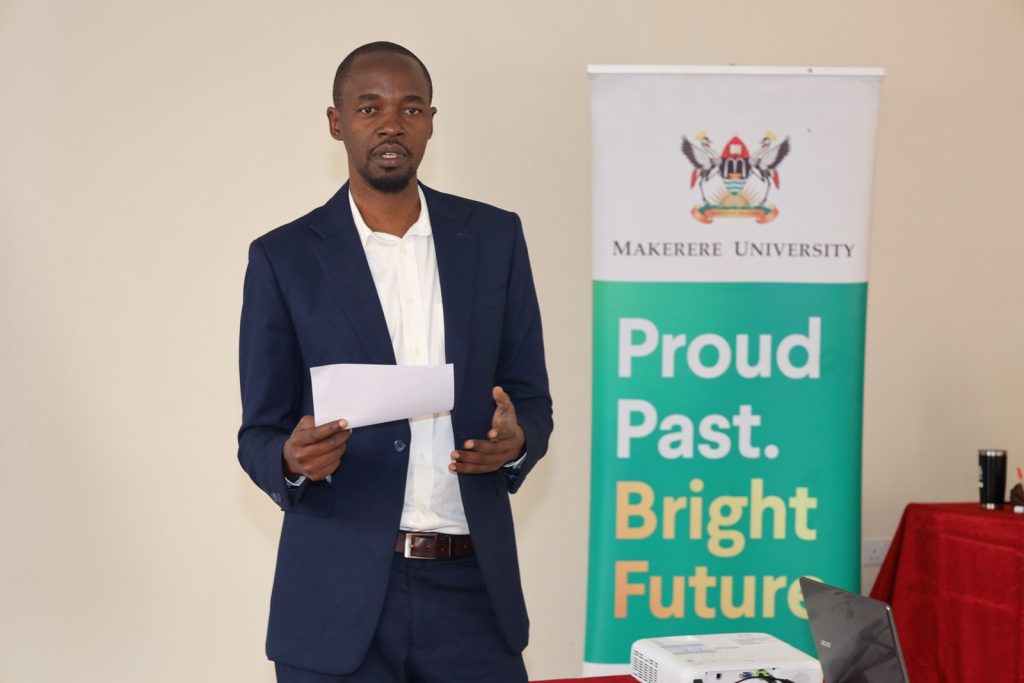
Speaking during the dissemination workshop in Mbale City on August 1, 2024, Dr Kiwala while unveiling the framework said the new financing framework is built on several key elements, each designed to address specific aspects of funding infrastructure projects. These elements include the contribution of resources by various actors, diverse funding sources, external triggers of change, financing instruments, and financing structures.
- Actors Contributing Resources: The framework emphasizes collaboration and community engagement. It involves a range of stakeholders, including government entities, private investors, and commercial lenders, working together to pool resources and share risks.
- Funding Sources: The framework taps into multiple funding sources, both public and private. National, international, and local governments, along with donors and impact investors, are expected to play significant roles in financing infrastructure initiatives.
- External Triggers of Change: This element focuses on the various external factors that can initiate or accelerate infrastructure projects. These include regulatory changes, market forces, economic incentives, and financial reforms.
- Financing Instruments: A variety of financing instruments are available under the framework. These include grants, equity investments, short-term and long-term loans, user fees, loan rebates, bonds, and guarantees. This diversity allows for flexibility and adaptability in funding approaches.
- Financing Structures: The framework incorporates innovative financing structures such as pooled finance, special purpose vehicles, revolving funds, project finance, public-private partnerships (PPPs), and leasing arrangements. These structures are designed to enhance financial stability and efficiency in project implementation.
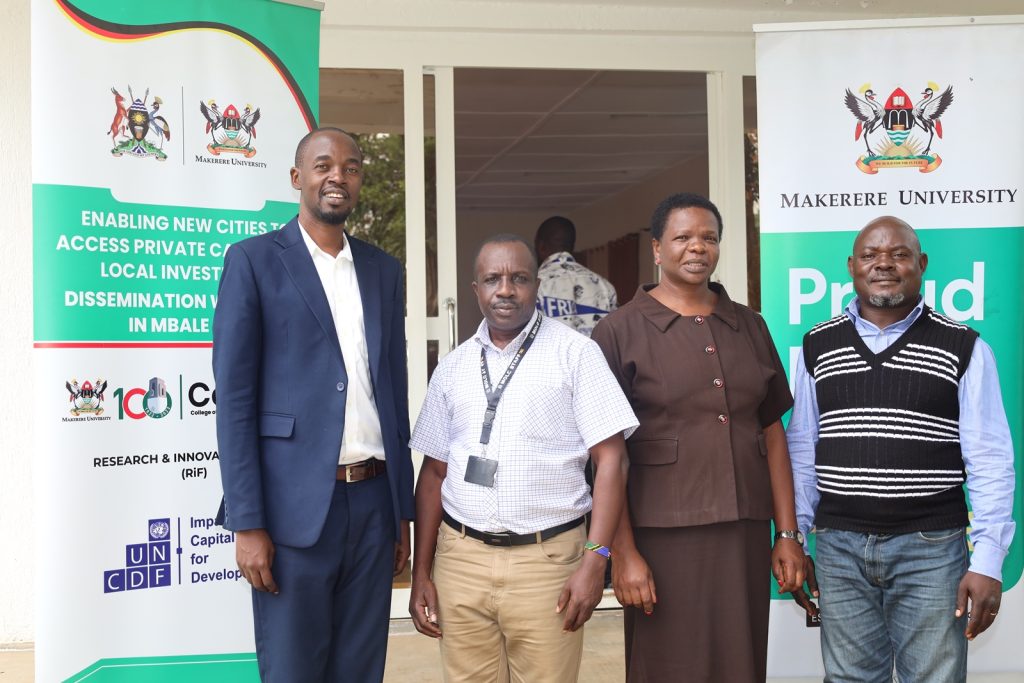
The new framework outlines specific mechanisms to operationalize these elements. These mechanisms include:
- Collaboration and community engagement to foster collective ownership of projects.
- Funding from a mix of government sources, donors, and commercial lenders.
- Regulatory and market-driven changes that create conducive environments for infrastructure investments.
- A wide range of financial instruments to meet the diverse needs of projects.
- Structured financing options to ensure robust and sustainable funding models.
Impact and Future Prospects
This innovative financing framework is poised to transform the landscape of infrastructure development in Uganda. By leveraging diverse funding sources and adopting flexible financing structures, local governments will be better equipped to undertake critical infrastructure projects that drive economic growth and improve public services.
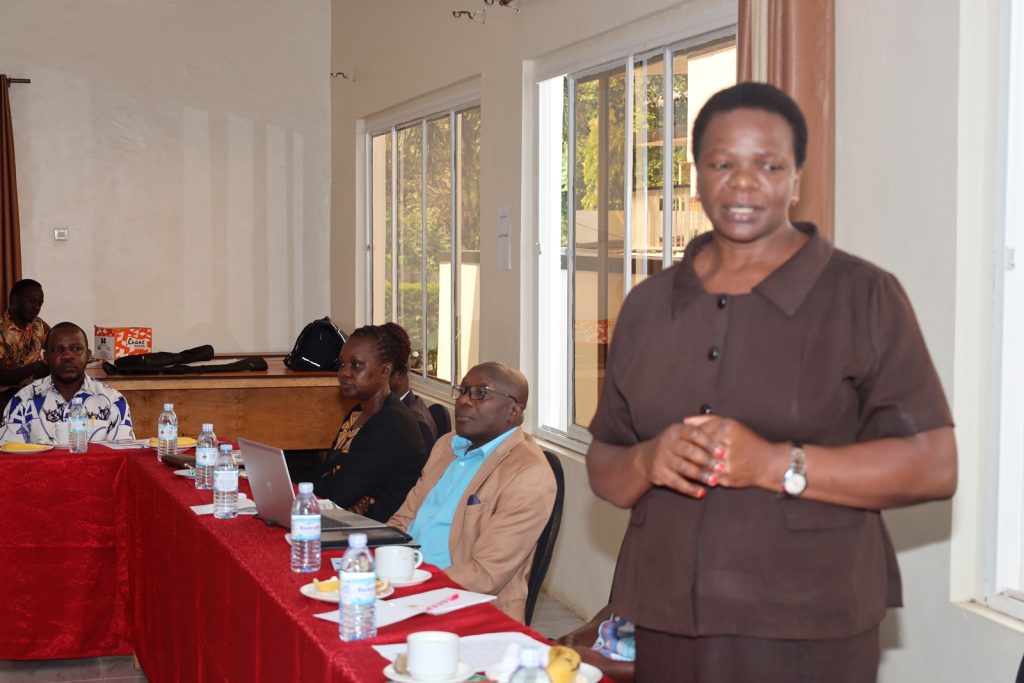
The introduction of this framework also signals a shift towards more inclusive and sustainable development practices. With community engagement and risk-sharing at its core, the framework ensures that infrastructure projects are not only financially viable but also socially equitable.
As Uganda embarks on this new path, the success of the financing framework will likely serve as a model for other developing countries facing similar challenges in funding infrastructure development. The future looks promising as local governments, in collaboration with various stakeholders, pave the way for a brighter and more prosperous Uganda.
The Principal Assistant Town clerk – Northern Division, Ms. Annet Nandudu, expressed optimism for the future, saying that with continued collaboration and strategic planning, the challenges can be overcome. Ms. Nandudu the importance of transparency and accountability in the financing framework to ensure that resources are utilized efficiently and effectively. She also highlighted the need for ongoing capacity building to strengthen local government institutions and empower communities to participate in decision-making processes.
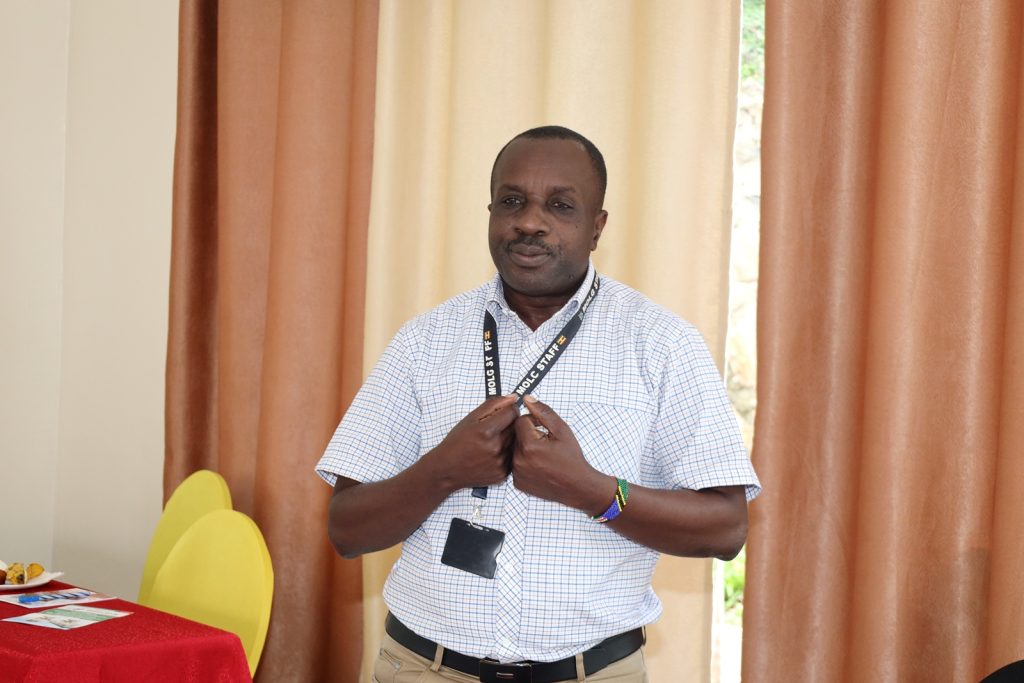
On his part, Mr. Julius Masereka, Principal Urban Officer, Ministry of Local Government, said the government was committed to the successful implementation of such initiatives. He emphasized the importance of collaboration between the government and local communities to ensure sustainable development. He called on the LGs to write bankable projects so that they can access funding from various sources and contribute to the overall development of their communities.
Research team
Dr. Yusuf Kiwala
Mr. Kanakulya Ronald
Ms. Maureen Nandaula
Dr. Kintu Ismail
You may like
-


16 Days of Activism Campaign Unveiled
-


Erasmus Exchange Prof.’s Mak Photo wins Poland National Prize
-


Dr. Michael Makanga and the Galien Africa Special Career Achievement Prize
-


Strengthening South-South Academic Partnerships: Makerere University and Binary University Chart a Strategic Path for Innovation, Entrepreneurship and Women’s Leadership
-
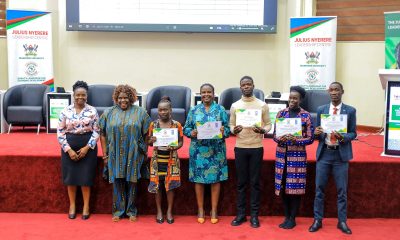

From Vision to Action: Five JNLC–UNDP Alumni Innovations Win Seed Funding
-


Makerere University and Partners Celebrate INSSPIRE Project Achievements in Evidence-Based Higher Education on Food Systems and Climate Action
Business & Management
KCCA Officials Begin Two-Week Public Investment Management Training in Jinja
Published
1 week agoon
November 17, 2025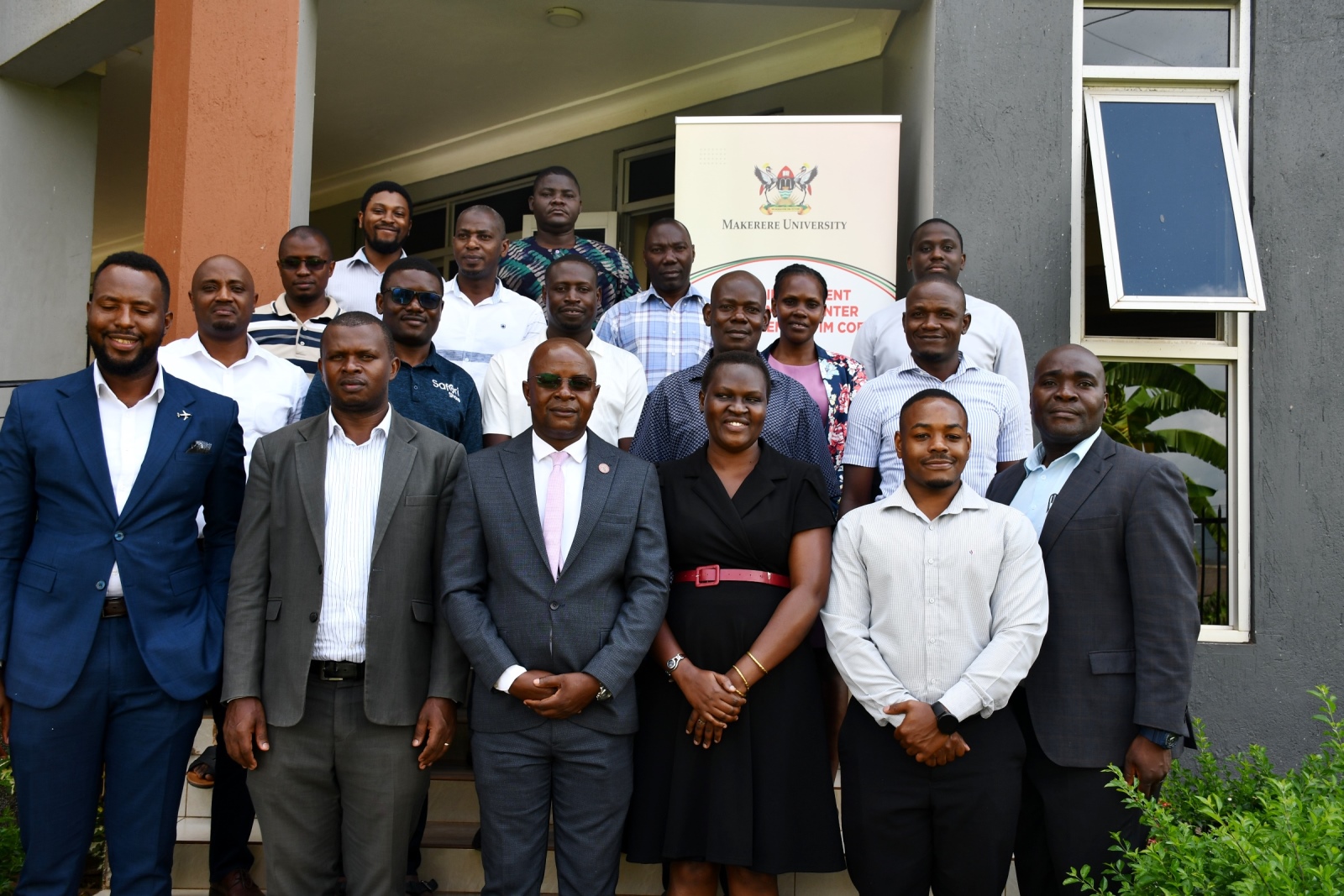
The Public Investment Management Centre of Excellence (PIM CoE), Makerere University, has today, November 17, 2025, officially opened a two-week specialized training in Financial Appraisal and Risk Analysis for officials from the Kampala Capital City Authority (KCCA). The training, fully funded by KCCA, is taking place in Jinja and aims to strengthen the institution’s internal capacity to prepare, analyse, and manage high-quality public investment projects.
The workshop was opened by Prof. Edward Bbaale, Director of the PIM Centre of Excellence and Principal of the College of Business and Management Sciences, who commended KCCA for prioritising continuous professional development in public investment management.
Strengthening Capacity for Better Public Investments
In his opening remarks, Prof. Bbaale expressed deep appreciation to the Ministry of Finance, Planning and Economic Development (MoFPED) for its generous financial support to the PIM Centre of Excellence. He further acknowledged the Ministry’s strategic partnership with Makerere University, which has enabled the Centre to grow into a credible national hub for training, research, and policy dialogue in Public Investment Management.
“This particular cohort is unique and significant,” Prof. Bbaale said. “For the second time, KCCA has fully sponsored its officials to undertake this training, demonstrating strong dedication to improving the quality, efficiency, and overall effectiveness of public investments in the city.”
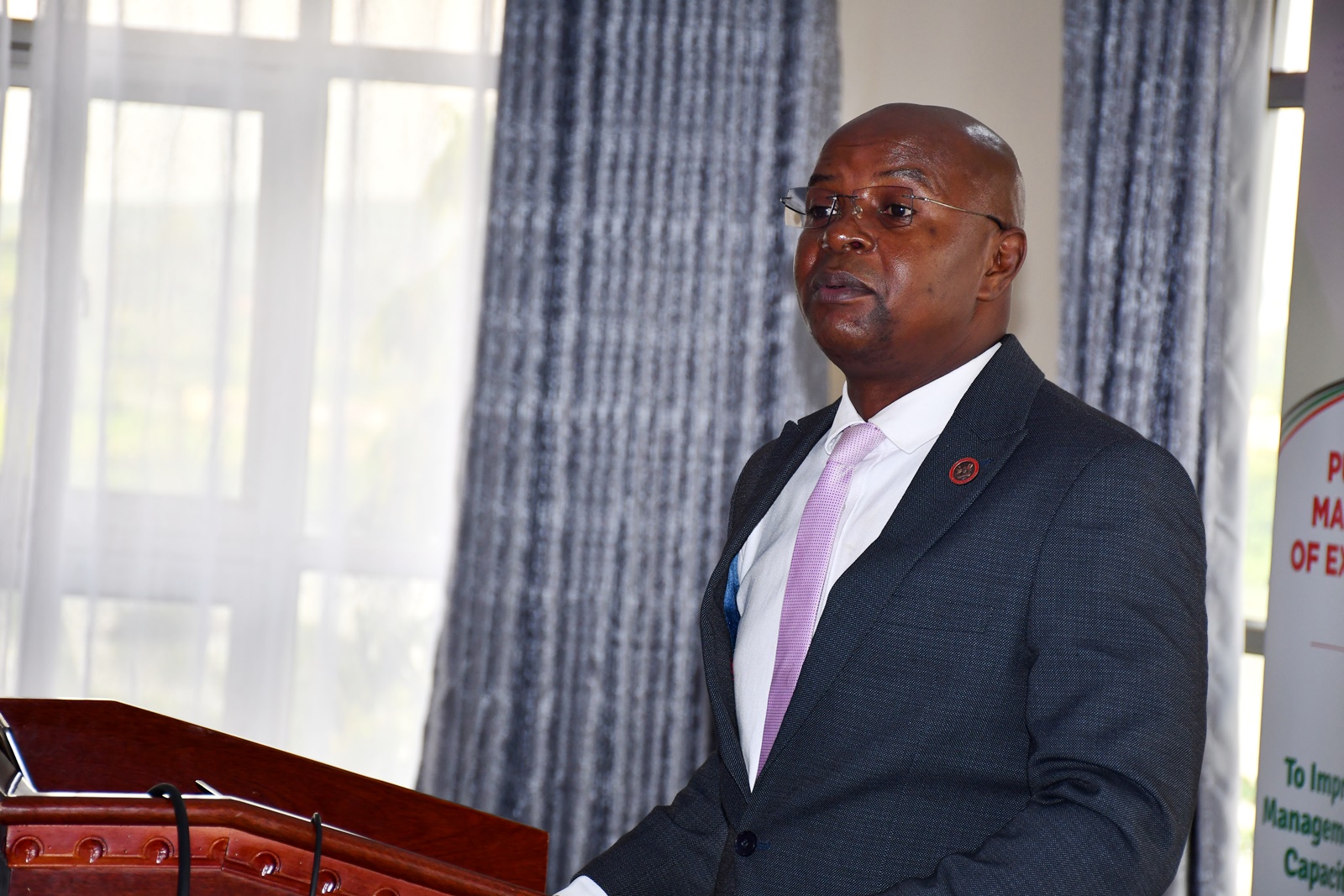
He thanked Makerere University management, faculty members from Makerere, MoFPED, and the National Planning Authority for their continued dedication to knowledge sharing and national capacity development.
From Theory to Hands-On Project Appraisal
Earlier, Dr. John Sseruyange, Manager of the PIM Centre of Excellence, welcomed participants and outlined the structure and importance of the training programme. He emphasized that governments worldwide increasingly require rigorous financial, economic, and risk appraisal of projects before implementation; a standard that Uganda is actively embracing.
Dr. Sseruyange noted that the training is designed to build practical skills in:
- Preparation of project concepts and profiles
- Financial appraisal and modelling
- Economic appraisal and stakeholder analysis
- Integration of climate change, environmental, and social considerations
- Risk analysis using modern tools and techniques
“Our approach blends theory with hands-on practical sessions,” he said. “By the time you complete this course, you will have acquired skills that you can apply to multiple projects beyond the one you analyse here. The goal is to ensure that you become competent project appraisal professionals capable of supporting your institution and the wider public sector.”
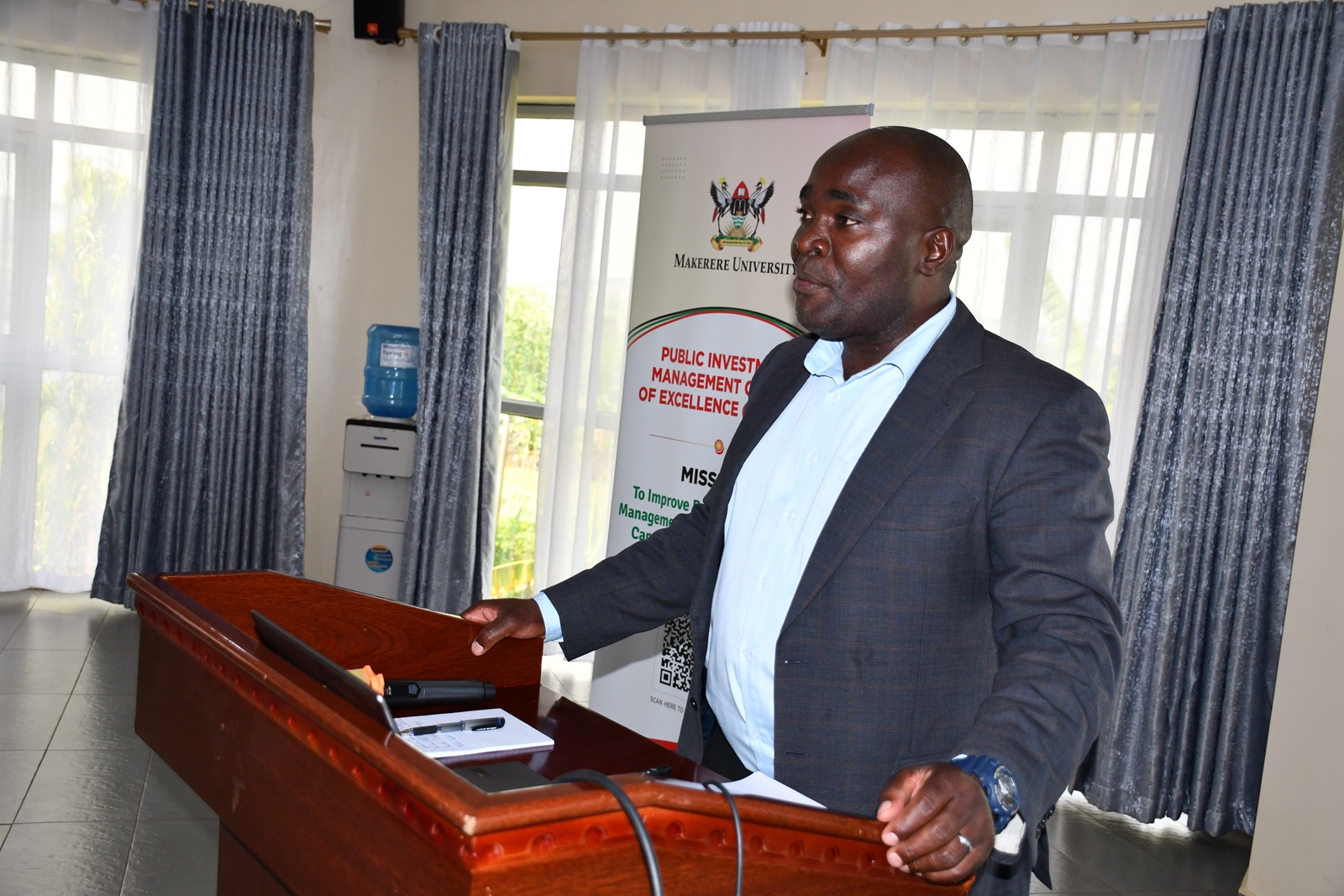
He also highlighted upcoming government requirements starting July 2025, which will extend appraisal to policies, bills, and programmes; skills that participants can also support once trained.
Toward a Stronger Public Investment System
Prof. Bbaale encouraged participants to fully engage in the sessions and take advantage of the opportunity to strengthen their technical competencies. He also invited them to return for the Economic Appraisal module in the near future, after which they will earn a dual certificate issued jointly by Makerere University and MoFPED.
Beyond training, he highlighted the Centre’s recent achievements, including:
- Revision of the Development Committee Guidelines
- Assessment of project performance since NDPI
- Hosting the inaugural Public Investment Management Conferences in 2024 and 2025
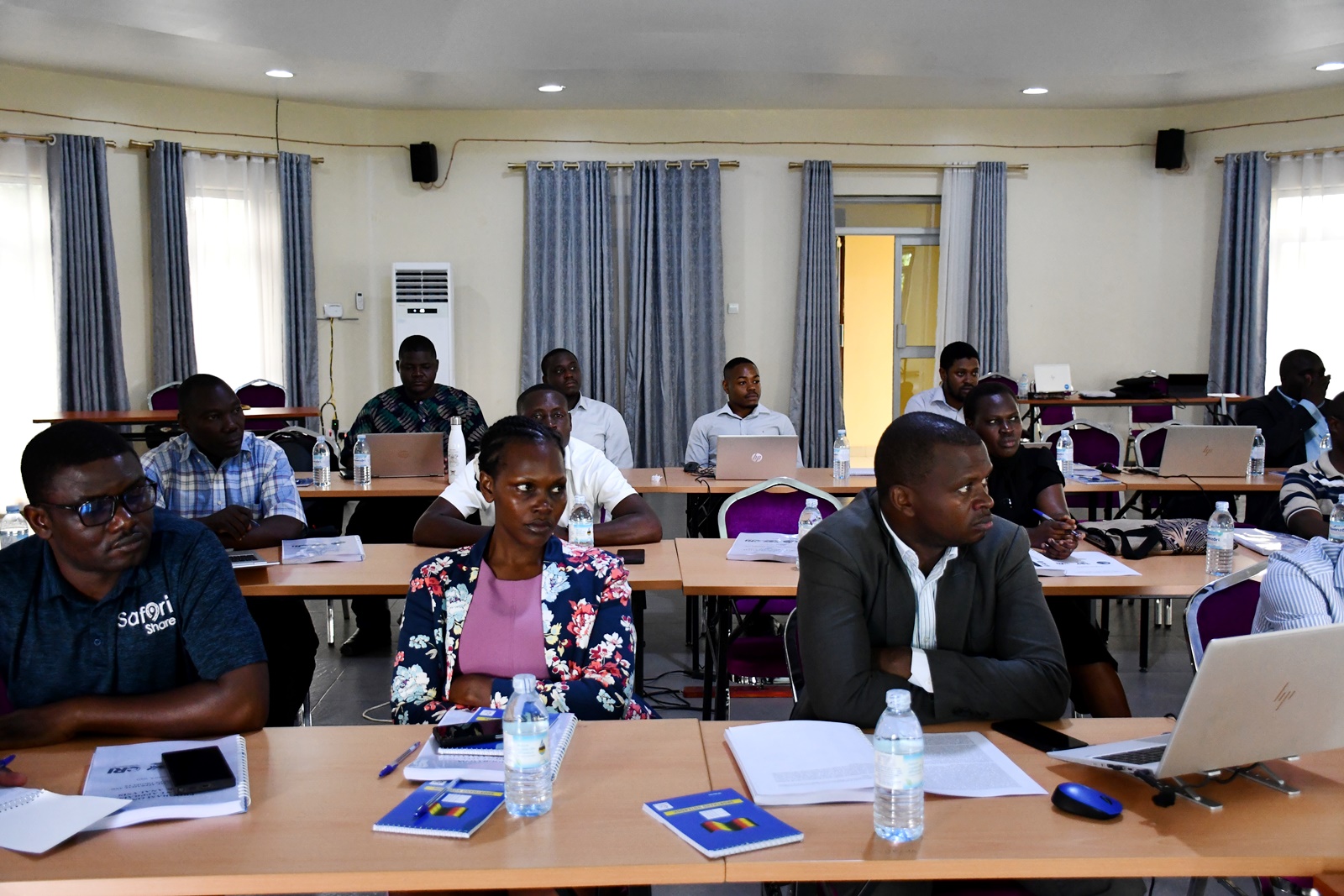
“These efforts demonstrate our commitment to contributing to Uganda’s public investment reform agenda,” he said. “We look forward to partnering with you in research, outreach, and capacity-building initiatives.”
Looking Ahead
The two-week KCCA training marks another milestone in the Centre’s mission to enhance Uganda’s public investment ecosystem. Over the coming days, participants will engage with real-world projects from sectors such as health, roads, education, electricity, water, and energy; equipping them with practical skills essential for driving development in the city and the country. The opening ceremony concluded with a call for collaboration, professionalism, and a shared commitment to improving public investment outcomes for national development.
Business & Management
Uganda National Academy of Science inducts Professor Edward Bbaale as Distinguished Fellow
Published
3 weeks agoon
November 4, 2025
On Friday 31st October 2025, Professor Edward Bbaale, the Principal of the College of Business and Management Sciences, at Makerere University, was inducted into the prestigious fellowship of the Uganda National Academy of Sciences (UNAS).
With this induction into UNAS, Professor Bbaale adds to his numerous national and international awards, the title- Fellow of the Uganda National Academy of Sciences (FUNAS).
Professor Bbaale’s induction as a distinguished Fellow of the Uganda National Academy of Sciences reflects his outstanding scholarly achievements and leadership in advancing research, policy, mentorship and academic development.
The 2025 Induction Ceremony of Fellows symbolizes UNAS’ continued commitment to recognizing and harnessing local intellectual excellence in driving the nation’s path toward self-reliance and sustainable growth.
The induction ceremony provided a platform to celebrate academic excellence, scientific innovation, and national contribution as 27 distinguished scholars were formally received into the prestigious fellowship of the Academy — 9 female and 18 male inductees representing four key disciplines namely: Medical Sciences, Social Sciences, Agricultural Sciences, and Physical Sciences.
Some of the scholars and researchers from Makerere University who were inducted as Fellows include: Professor Edward Bbaale, Professor Helen Nambalirwa Nkabala, Professor Rev. Sr. Dominica Dipio, Associate Professor Egeru Anthony, Professor Nazarius Mbona Tumwesigye, Associate Professor Arthur Tugume, Associate Professor Jackie Bonabana and Associate Professor Frank Mugagga.
According to the UNAS Vice President, Dr. Mary Goretti Nakabugo, the process leading to the fellowship is strictly merit-based, stressing that individuals do not apply for fellowship themselves, specifying that they are nominated in recognition of their exceptional contributions to science and society. She disclosed that when the call is publicized, existing members/fellows propose qualified candidates who meet the set criteria. Highlighting UNAS’s commitment to quality assurance, she revealed that the vetting process is meticulous and time-intensive. “When the vetting is completed, a report is submitted to another committee for further scrutiny before final approval by the UNAS Council,” she explained.

Nomination of Professor Edward Bbaale as Fellow of UNAS:
For induction into the UNAS fellowship, Professor Edward Bbaale was nominated by Dr. Ibrahim Mike Okumu, an Associate Professor and Dean at the School of Economics at Makerere University. The nomination was seconded by Professor Ronald Bisaso, the Deputy Principal of the College of Education and External Studies at Makerere University. Their endorsement highlighted Professor Bbaale’s distinguished academic record, strategic leadership, and impactful contribution to research and economic policy, which have significantly shaped higher education and national development discourse.
Presentation of Professor Edward Bbaale for Induction:
Professor Ronald Bisaso said: “I have the honour to present to you-Professor Edward Bbaale for Induction.”
Edward Bbaale is a Professor of Economics, with research focusing on development microeconomics, holding a PhD in Economics from Johannes Kepler University of Linz, Austria, and both a Master’s and Bachelor’s in Economics from Makerere University. Professor Bbaale, the Principal of CoBAMS, has previously served as Director of Research and Graduate Training, Dean of the School of Economics at Makerere University, and currently leads the Environment for Development Center, the Public Investment Management Center of Excellence, and coordinates the Inclusive Green Economy Program. He also serves as Council Member and Chair of the Humanities and Social Sciences Committee of the Uganda National Council for Science and Technology (UNCST), and as Council Member of Makerere University Business School (MUBS).
“His research focuses on development microeconomics, with over 50 publications in peer-reviewed journals. He has undertaken numerous research projects in collaboration with government and international agencies and has made significant contributions to resource mobilization through competitive grant writing, research support, training, and policy engagement initiatives that advance science and development in Uganda and beyond.
Professor Bbaale commits to advancing research, innovation, scholarship and mentorship:
Following his induction, Professor Edward Bbaale expressed profound gratitude for the honor of being admitted as a UNAS Fellow. He described the recognition as both humbling and deeply inspiring, thanking his nominator, seconder, and the entire UNAS leadership for the confidence and trust they had bestowed upon him. Professor Bbaale noted that being named a Fellow was not merely a personal achievement, but a reaffirmation of his lifelong commitment to advancing the frontiers of knowledge through research, innovation, and mentorship.

Professor Bbaale reflected on the significance of the honor as a renewed responsibility to contribute even more meaningfully to Uganda’s scientific and socio-economic transformation. He emphasized that the role of scientists extends beyond academia, underscoring the need to apply research and evidence-based insights to address real societal challenges and inform national policy.
Professor Bbaale pledged to continue fostering a culture of inquiry, collaboration, and excellence among emerging scholars, particularly those in the fields of economics, development, and public policy. He thus dedicated his induction to the next generation of scientists, affirming his commitment to guide and empower them to use science and knowledge as powerful tools for national progress and sustainable development.
“I am greatly humbled for this honor. To me, this confidence and trust is a unique call to contribute more in science and research, and also to nurture and build up the next generation of scientists,” stated Professor Bbaale.
UNAS Fellows tasked to be agents of national and community development:
The President of the Uganda National Academy of Sciences (UNAS), Professor Grace Bantebya Kyomuhendo, congratulated the newly inducted Fellows and officially welcomed them to the Academy, urging them to remain active and committed to advancing science and service to society. She commended the new Fellows for their remarkable achievement, noting that induction into UNAS is both an honor and a responsibility.
“Having accepted and signed our book of records, I officially congratulate and welcome you as new Fellows of the Uganda National Academy of Sciences . May you always remember this occasion and strive to live up to the aims and ideals of this Academy in all your professional and personal endeavors,” said Prof. Bantebya Kyomuhendo.

Professor Bantebya Kyomuhendo reminded the new fellows that the honor of induction carries the enduring responsibility to use their knowledge and influence to serve the country and uplift their communities, “After being inducted as members of UNAS, please remain in touch and active. As UNAS, we want to use science to serve our country and our communities. We must give back to society,” she urged.
UNAS President highlights the importance of trust, core responsibilities and obligations:
Reflecting on the UNAS Annual Scientific conference theme, “Renewal from Our Roots: Uganda’s Path to Self-Reliance and Self-Sufficiency,” Professor Bantebya Kyomuhendo encouraged participants to draw strength from Uganda’s cultural and intellectual heritage, noting that the nation already possesses within itself the foundation for growth through its culture, heritage, and shared history, which she said form the roots from which self-reliance and self-sufficiency can be nurtured.
She underscored the importance of trust as a cornerstone for development and progress. “The concept of trust has come up a lot — trust at individual, family, community, and national levels. As we move forward, we must build and strengthen trust, for it is through trust that we can harness the potential within us and the resources around us,” she said.
Professor Bantebya Kyomuhendo outlined to the newly inducted fellows the core responsibilities and obligations that come with being a Fellow of the Academy. She highlighted that fellowship is both an honor and a responsibility, requiring dedication to scientific excellence, ethical leadership, and service to the nation. She emphasized that Fellows must uphold the UNAS Constitution, contribute to the Academy’s mission, vision and objectives. She urged them to remain active in their fields, participate in Academy activities, maintain high standards of conduct, and foster positive relationships within the scientific community and the public.

UNAS Vice President elaborates the quality assurance measures for selection of Fellows:
Speaking about the induction process, Dr. Mary Goretti Nakabugo, the UNAS Vice President articulated the thorough and transparent procedure followed in identifying and approving new Fellows. She explained that the Fellows and Membership Committee, guided by the UNAS Constitution, works closely with the Secretariat to open a window for nominations, during which existing members propose qualified candidates who meet the set criteria. She noted that each nomination is supported by a nominator and a seconder and accompanied by detailed documentation demonstrating the nominee’s qualifications and contributions.
“When we advertise, members of UNAS nominate those who are eligible to become inductees. We have a nomination form that outlines all the criteria and requirements for one to be considered. This form is filled by the nominee, with the assistance of the nominator, and it is usually supported by a seconder. Once the documentation is complete, it is submitted to us,” the Vice President explained.
She extended her appreciation to the Secretariat and organizing team for their dedication in ensuring the success of the UNAS Annual Scientific conference and induction ceremony. She lauded the excellent panels, engaging discussions, and the spirit of collaboration that characterized the event, emphasizing that it was through collective effort that the meeting had been successful.
Business & Management
Brewing Innovation: 9th Annual Youth Expo showcases enterprises in Uganda’s coffee value chain
Published
1 month agoon
October 21, 2025
By Ritah Namisango and Monica Meeme
On 17th October 2025, the Makerere University Freedom Square was a beehive of activity as over 600 students from the College of Business and Management Sciences (CoBAMS) participated in the 9th Annual Innovation and Youth Expo.
Organized by the Makerere University Entrepreneurship and Outreach Centre, the 2025 Innovation and Youth Expo, focused on Uganda’s most strategic Agricultural sector – COFFEE.
Under the theme, Brewing Prosperity: Youth Entrepreneurship in Uganda’s Coffee Value Chain, student entrepreneurs exhibited more than 300 innovations including youth coffee brands, brewing demonstrations, agri-tech prototypes, live cupping sessions, among others.
The Youth Expo focused on amplifying youth-led innovations across the entire coffee value chain—from farm to cup, providing a hands-on, interactive platform for young entrepreneurs to exhibit their products, prototypes, and business ideas, while engaging directly with industry stakeholders.
By placing the youth at the center of the value chain, the Youth Expo demonstrated the untapped potential of innovation, creativity, and enterprise among Uganda’s next generation of entrepreneurs.
Student innovations for real-world impact:
The Director of the Makerere University Entrepreneurship and Outreach Centre, Dr. Sarah Bimbona, urged students to view their innovations not just as academic projects, but as the starting point for real-world impact.
“These innovations should not just end here or be seen as projects for marks. Continue nurturing those dreams, take them further, and make them a reality,” she advised.
She recognized the critical role of faculty and mentors, specifically appreciating them for their tireless support in guiding students through their innovation undertakings.

Dr. Bimbona emphasized the importance of linking academic learning with practical enterprise, highlighting that student-led innovations have the potential to create meaningful economic and social change.
Students encouraged to embrace entrepreneurship:
The Dean, School of Business, Associate Professor Godfrey Akileng specified that entrepreneurship is one of the flagship initiatives of the College of Business and Management Sciences. He encouraged the students to seize the moment. “This is your opportunity to showcase your innovations, to interact with industry players, and to change your mindset from job-seekers to job creation,” he said. “Let the entrepreneurship Expo awaken a new spirit in you-one that says-yes, I can make it.”
Associate Professor Akileng cited the story of Bill Gates as an example of what determination and innovation can achieve, reminding the students that greatness often starts from simple beginnings. “There is no reason we cannot build something extraordinary from coffee and other local products,” he stated, emphasizing the value of entrepreneurship in national transformation.
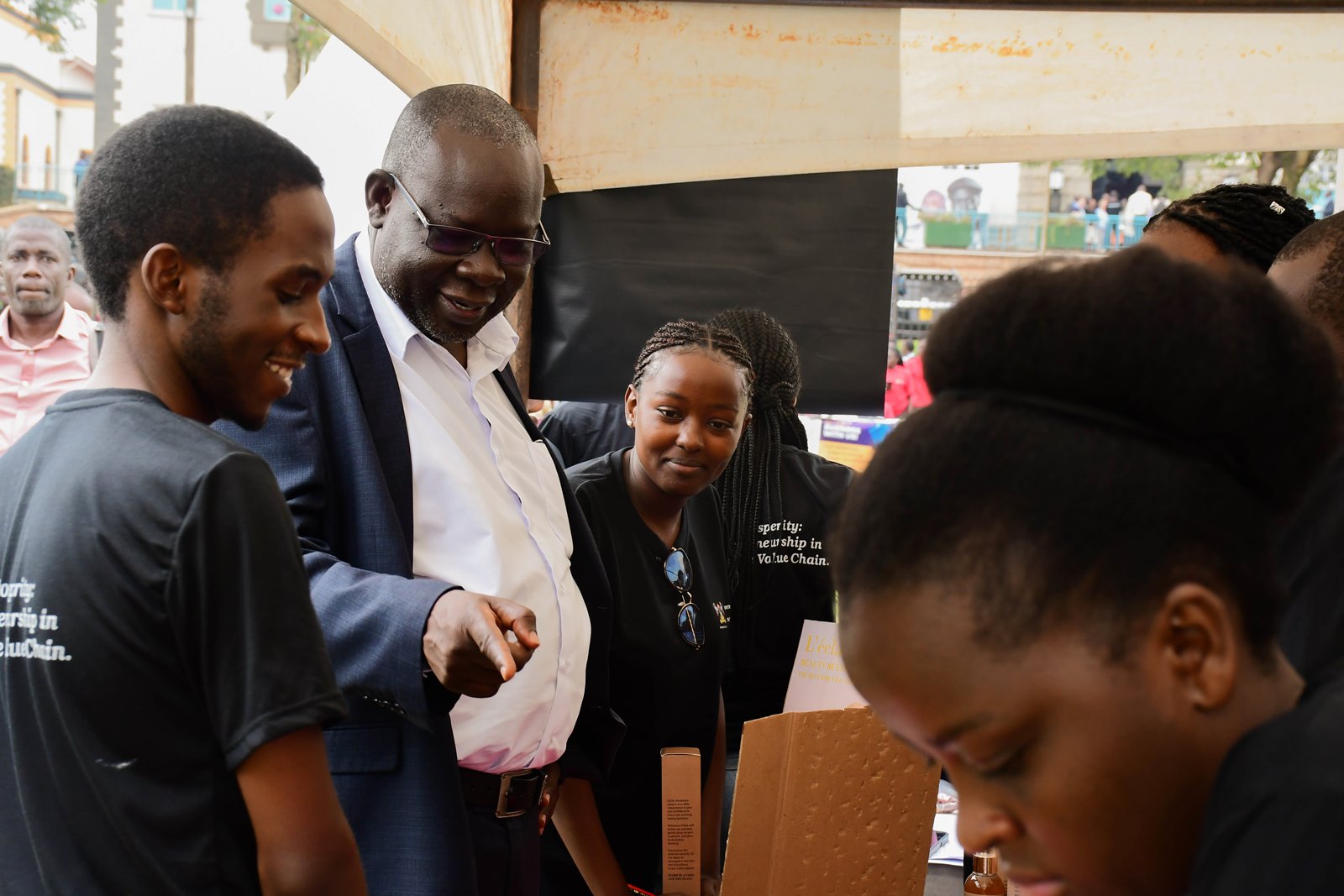
The Dean, School of Business, expressed deep appreciation to the industry partners for their collaboration and generosity. “You have invested time, knowledge and financial support to be here. Thank you for supporting the Entrepreneurship Congress and Expo,” he remarked.
BRAC Uganda participates in the Expo:
The Communications Officer of BRAC Uganda, Ms. Barbra Ampaire, stressed that BRAC aims to equip youth with the tools and knowledge to discover and maximize their potential.
“We have supported thousands of youth through tailored programs in areas such as tailoring, livestock farming, agribusiness, financial literacy, and value addition. These initiatives are supported not just with training, but also with seed capital, equipment, and ongoing mentorship,” she said.

Ms. Ampaire noted that Makerere University, being a hub for students and young innovators, aligns perfectly with BRAC’s focus on empowering youth while they are still developing their ideas and ambitions.
A case for domestic consumption and local processing:
One of the participants from the BRAC Scholar Transition Fund, Mr. Godwin Birungi, emphasized the need for domestic consumption and local processing, highlighting that exporting raw coffee reduces employment opportunities and stunts economic growth.
“When we consume and process our coffee locally, we not only improve public health, but also create jobs and stimulate our economy.”
He encouraged young entrepreneurs to embrace patience, maintain consistency in their efforts, and stay focused on their goals, emphasizing that building a successful and sustainable business is a gradual process that requires dedication and resilience.

“Building a sustainable business takes time. Many successful entrepreneurs spent over a decade before making a profit. Find your passion, refine your strategy, and stay the course.” he said.
Student entrepreneurs speak out:
The Marketing Manager of Victory Cakes students’ enterprise, Ms. Keziah Nasenga, explained that the team offers two main product variations including coffee cupcakes with icing and those without, catering to different customer preferences.
She noted that the cupcakes are crafted using brewed coffee mixed with hot water, then blended with traditional baking ingredients such as flour, vanilla, and other flavor-enhancing components.
A student from the Ring Hair Stimulator group, Ms. Martha Alwe, said their product is a premium hair care solution designed to promote healthy hair growth, prevent breakage and hair loss in women, and enhance beard growth in men through a specialized beard oil.

“The full product line includes beard growth oil, hair shock treatment, hair spray, leave-in conditioner, and hair growth shampoo each carefully developed to address a wide range of hair care needs with quality and effectiveness,” she said.
The Marketing Manager of the team of Coffee Cupcake, Ms. Catherine Nasaazi, explained that the shampoo is enriched with sodium benzoate, tea tree oil, and other ingredients.
Precursor to the Youth Expo:
The 3rd Uganda Entrepreneurship Congress held on 16th October 2025 at Makerere University Yusuf Lule Central Teaching Facility Auditorium, provided a perfect transition into the 9th Annual Makerere University Youth Expo held on 17th October 2025 at the Freedom Square.
During the Uganda Entrepreneurship Congress, students listened to lived experiences and case presentations from young, mid-level and senior entrepreneurs. The panelists who discussed topics on Market Readiness, Value Addition and Story Telling, as well as, Financing the Future, enlightened the students and upcoming entrepreneurs to creating impact, access to markets and capital, and breaking the barriers in a competitive world.

The students gained valuable knowledge from the Chief Guest-Mr. Odrek Rwabwogo, Chair of the Presidential Advisory Committee on Exports and Industrial Development, and the Keynote Speaker- Mr. Moses Nyabila, CEO of aBi Development Ltd.
Mr. Rwabwogo challenged the young entrepreneurs to think beyond Uganda’s borders, when he highlighted that true entrepreneurship lies in producing goods that can compete on the international market.
“When you build a business that can sell in another person’s market, you are a hero or heroine because what you have done is disrupting the status quo, which praises imports over exports. In this country, for instance in Kikuubo business area, you hear statements such as my container is about to reach Uganda, and not my container is leaving the yard in Uganda and is taking avocado to Spain or another country. I want the language to change.”
Partners of the Uganda Entrepreneurship Congress and Youth Expo: Makerere University (Mak), Ministry of Agriculture, Animal Industry and Fisheries (MAAIF), National Coffee Research Initiative (NaCORI), BRAC Uganda, Tooke, Mastercard Foundation Scholars Program at Makerere University, Vision Group, Mountain Harvest, Pepsi, Rainforest Alliance, Sumz, and the Banana Industrial Research & Development Centre.
Writers: Ritah Namisango, Principal Communication Officer at Makerere University & Monica Meeme, a student of Bachelor of Journalism and Communication at Makerere University.
Trending
-
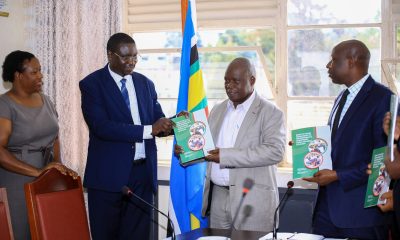
 Research2 weeks ago
Research2 weeks agoMakerere University and Ministry of Public Service Study Reveals Impact of Salary Enhancement on Teacher Performance in Uganda
-
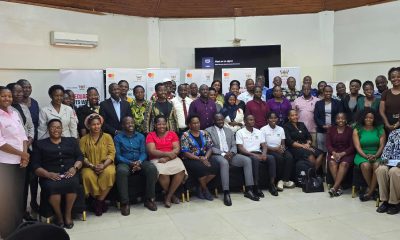
 General1 week ago
General1 week agoMakerere University officially commences implementation of its Mentorship Policy
-

 Education2 weeks ago
Education2 weeks agoReal life project: Makerere University Vice Chancellor hands over constructed Wall Fence to Makerere College School
-
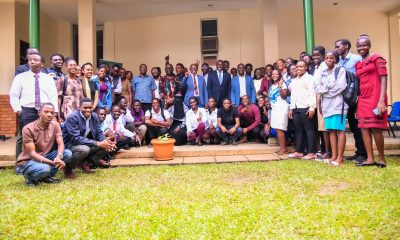
 Agriculture & Environment2 weeks ago
Agriculture & Environment2 weeks agoSFTNB-MIIC Partnership Nurtures Entrepreneurial Learners & Change Agents
-

 Health2 weeks ago
Health2 weeks agoMakSPH, MOH and JMS Lead National Efforts to Build a Resilient Health Supply Chain
